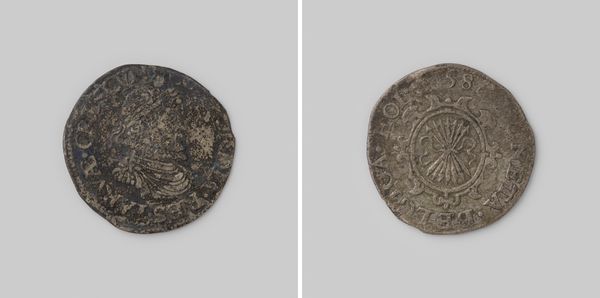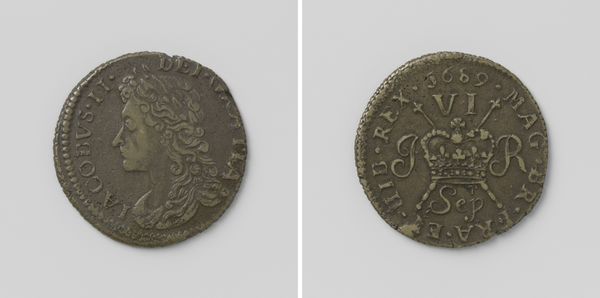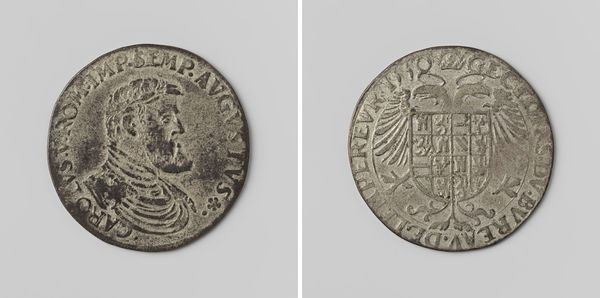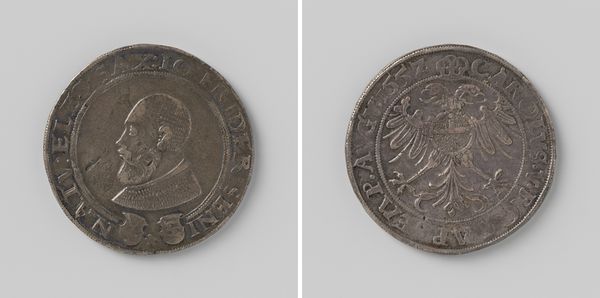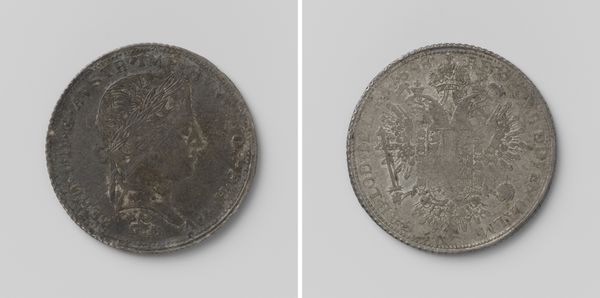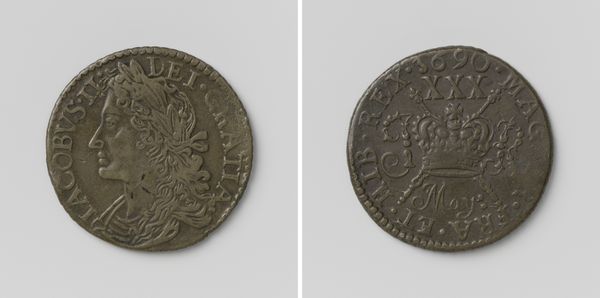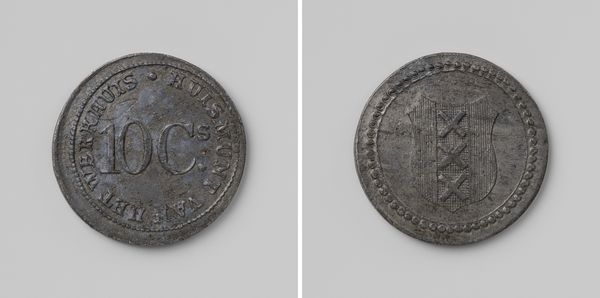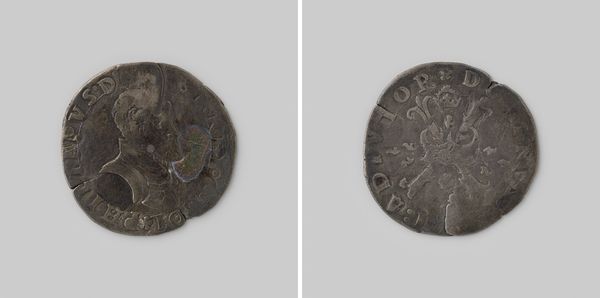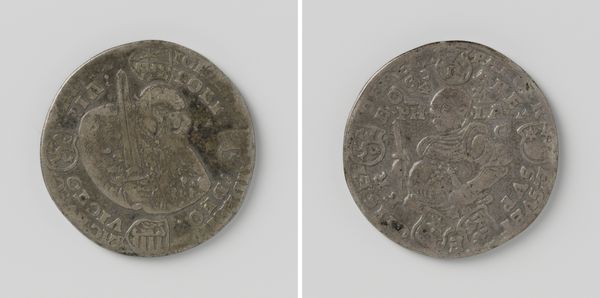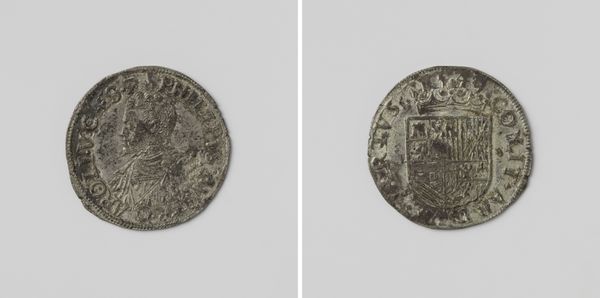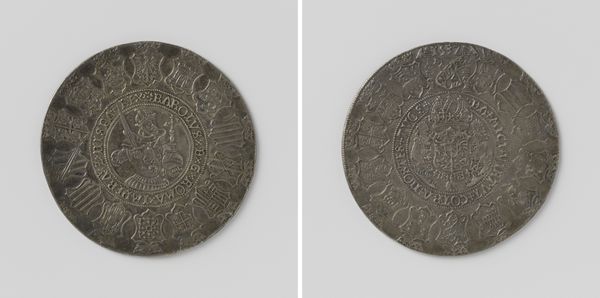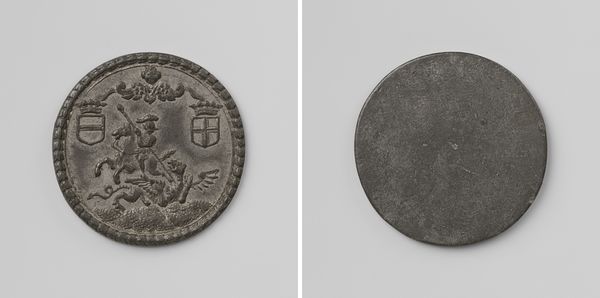
print, metal, engraving
#
portrait
# print
#
metal
#
ancient-mediterranean
#
ceramic
#
engraving
Dimensions: diameter 2.5 cm, weight 3.24 gr
Copyright: Rijks Museum: Open Domain
Editor: This is "Hollandse leicesterstoter, 1587," a print made on metal by an anonymous artist, currently residing in the Rijksmuseum. I find its worn texture really striking. What can you tell me about its historical context and significance? Curator: This small object speaks volumes about the political landscape of the late 16th century. Coins like these were not just currency, but potent symbols of power and regional identity. Looking closely, do you notice any particular imagery or text? Editor: Yes, I see a portrait of a figure on one side and a heraldic symbol, like a stylized lily, on the other. The inscription looks like "HOLLANDIE." Curator: Precisely. Consider the context: 1587 was a period of intense struggle for Dutch independence from Spanish rule. The "Hollandse leicesterstoter" was likely produced to assert local authority, promoting a distinct Holland identity against Spanish hegemony. What impact do you think images such as the portrait and heraldry would have had at the time? Editor: I guess that would be a source of both regional pride and a tangible affirmation of power and resistance, but was it legal? Wouldn't the Spanish rulers control minting? Curator: Minting coins was always a contentious issue. In this case, this coin signals both defiance and an attempt to create a self-sufficient economy and identity in the face of foreign control. The name also shows it's connected with the English Earl of Leicester - his disastrous governance nearly wrecked the Dutch revolt! It shows even mistakes end up stamped on history. Editor: That's amazing. It’s incredible to think how much political and social history is embedded within such a small, seemingly mundane object. Thanks so much for that illuminating perspective. Curator: Indeed. And these artifacts often force us to rethink conventional narratives of history and power, and remind us to look beyond grand narratives.
Comments
No comments
Be the first to comment and join the conversation on the ultimate creative platform.
